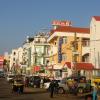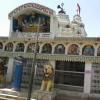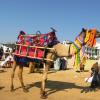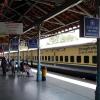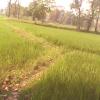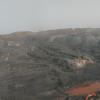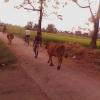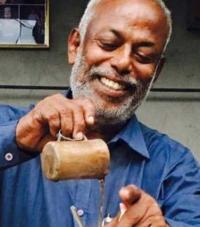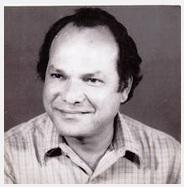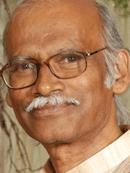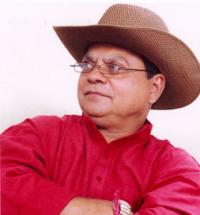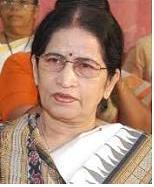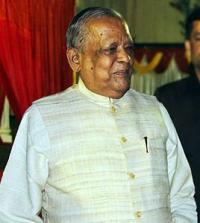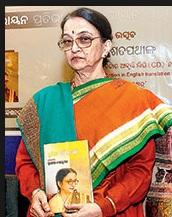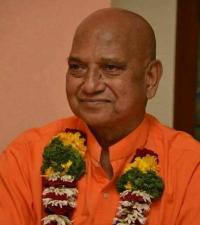Orissa is an Indian state which is located on the east coast of India. The capital of Orissa is Bhubaneswar. The language spoken here is Oriya. The state of Orissa was formed on 1st April 1936 and the day 1st April is celebrated as Utkala Dibasa.
History of Orissa
The history of Orissa spans over 5000 years. It was in Orissa that the famous Kalinga War of King Ashoka was fought in 261 C. E. Then it was a part of Harsha Empire and Soma dynasty. The Sultanate of Bengal conquered Orissa in 1568 and it came under the Mughal rule. In 16th century a part of Orissa was occupied by the Nizam of Hyderabad. In 1751, Maratha Empire held supremacy over the coastal Orissa.
After the Second Anglo-Maratha War in 1803, British East India Company brought Orissa under its control. The province of Bihar and Orissa was created in 1912. The province of Orissa was carved out of it on linguistic lines on 1st April 1936. Orissa Day is celebrated every year on 1st April by the people of Orissa. In 1950, Orissa became a state of independent India.
Geography of Orissa
Orissa spreads over an area of 155,820 square kilometers. The state is positioned on the Chota Nagpur plateau and the rich alluvial soil facilitates rice cultivation. The largest rice research institute in Asia is situated in Cuttack. Orissa is prone to cyclones and floods. The eastern coastal plains, the middle mountainous highlands, the central plateaus and the western rolling uplands form the state. More than one third of the total land area is covered by forests.
The rivers that flow through the state are Subarnarekha, Brahmani, Mahanadi, Budhabalanga, Baitarani, Salandi, Rushikulya, Bahuda, Vamsadhara, Nagavali, Machkund, Sileru, Kolab and Indravati. There are many mountain springs and hot springs here in Badaghagara, Sanaghagara, Saptasajya, Chandikhole, Barunei, Narayani and Nursinghanath.
The waterfalls in Orissa are Harishankar Waterfall, Nhrusinhanath Waterfall, Barehipani Waterfall, Joranda Waterfall, Koilighugar Falls, Khandadhar Falls, Kentamari Falls and Outudi Falls. Some of the lakes in Orissa are Chilika Lake, Anshupa, Pata, Hirakud Dam, Indravati Dam and Kolab Dam. Hirakud Dam is the largest dam in Asia.
Orissa State Map With Districts
There are 30 districts in Orissa as of June 2012. Given below is the Orissa state map with all 30 districts marked.
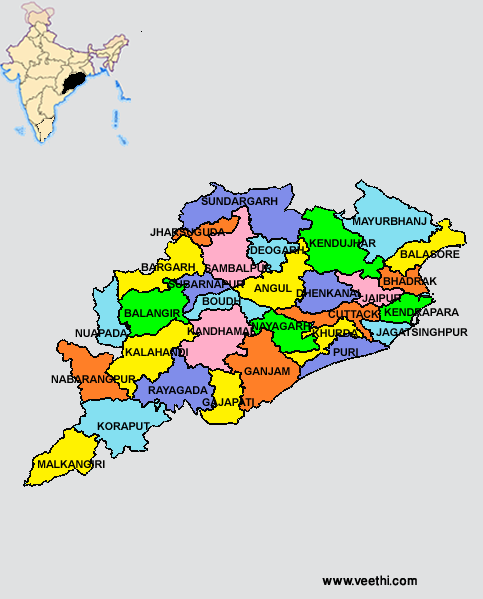
List of Districts of Orissa
|
|
|
People and Culture of Orissa
According to the 2011 census, the population of Orissa is 41,947,358 with a density of 270 people per square kilometer. 73% of the people of Orissa speak Oriya language. Other languages spoken here are Bengali, Hindi, Telugu and Santali. English is used as the official language. Some of the important tribal groups living here are Santhal, Bonda, Munda, Kora, Oraon and Mahali.
People of three main religions namely Hinduism, Buddhism and Jainism live here. Odissi is the oldest classical dance of Orissa. Ghumura dance, Darbari dance, Chhau dance and Mahari dance are other dance forms. Triswari, Chatuhswari and Panchaswari are the traditional music forms.
Mudhi or puffed rice has an important place in the Oriya cuisine. Other important food items are chenachur, pakhala, dalma, ghanta and posta curries. Orissa is famous for its rasagulla. Kheeri, haladi patra pitha, manda pitha, chitou pitha and poda pitha are other sweet varieties.
Economy of Orissa
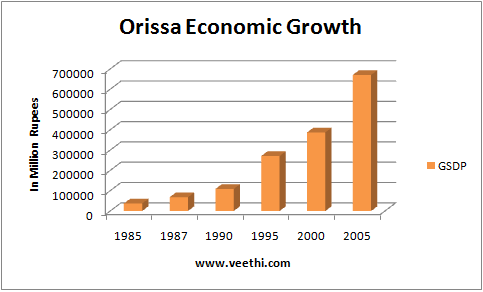
Orissa is rich in coal, iron ore, bauxite and chromite. Some of the important companies in Orissa are TCS, Mahindra Satyam, MindTree Consulting, Infosys, Reliance Power, Magnitogorsk Iron and Steel Company and Rourkela Steel Plant. Steel and power are the major industries in Orissa. In 2008-09, the growth rate in GDP of Orissa was 8.74%. The GSDP in 1985 was 37,080 million rupees and this grew to 670,900 million rupees in 2005. Orissa is the fourth fastest growing state in India after Gujarat, Bihar and Uttarakhand.
Education in Orissa
The literacy rate of people of Orissa is 73.45% and among that male literacy rate is 82.4% and female literacy rate is 64.36%. There are many colleges of national importance located in Orissa such as National Institute of Technology, Veer Surendra Sai University of Technology, National Institute of Science Education and Research, etc. Some of the medical colleges in the state are SCB Medical College at Cuttack, Veer Surendra Sai Medical College at Burla and MkCG Medical College at Berhampur.
Some of the popular centers of higher education are IIT Bhubaneshwar, National Institute of Science and Technology, North Orissa University, Sambalpur University, Berhampur University, Biju Patnaik University, Fakir Mohan University, KIIT University, etc.
Orissa Transportation
Orissa is well connected with other parts of India by road, rail and air network. The important airports in Orissa are Biju Patnaik Airport, Rourkela Airport and Jharsuguda Airport. Apart from them there are many small air strips. The important seaports are Port of Dhamara, Port of Gopalpur and the Port of Paradip. There are direct trains to Bhubaneswar from major cities of India like Delhi and Kolkata. Bhubaneswar is the headquarters of the South Eastern Railway.
Orissa Tourism
There are many temples in Orissa that make it an important center of religious tourism. The long coastal line of Orissa has given it some of the most beautiful beaches. The Asia’s largest brackish water lake named Chilika Lake is situated in the state. Some of the centers of tourist attraction are
1. Lingaraja Temple at Bhubaneswar
2. Udayagiri and Khandagiri Caves
3. Sun Temple at Konark
4. Gharial Sanctuary at Tikarpada
5. Gahirmatha Turtle Sanctuary
6. Chandaka Wildlife Sanctuary
7. Parimalagiri Buddha Vihar
8. Lalitagiri
9. Dhaulagiri
10. Bhitarakanika
11. Puri


